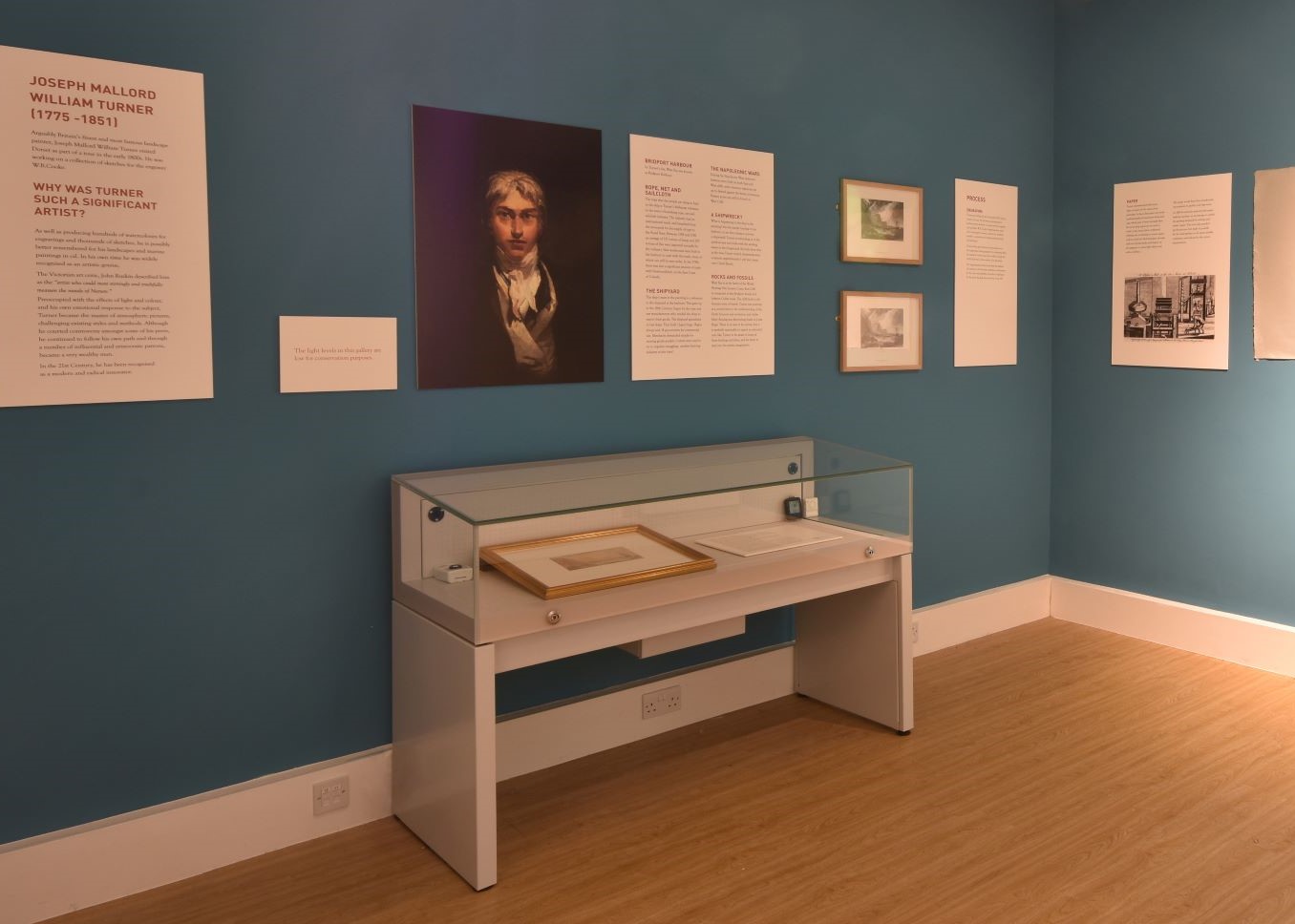Stay in touch with the latest news from AIM and get information on sector grants, jobs and events with our free fortnightly E-News.
Incredible impact – Turner in Bridport

Emily Hicks, Director, Bridport Museum Trust explains the impact one amazing painting can have.
In Summer 2019 Bridport Museum borrowed a J.M.W. Turner watercolour of Bridport Harbour, its arrival inspired town-wide events that formed the ‘Turner in Bridport’ programme.
Bridport Museum reopened in May 2017 after a £1.3 million redevelopment. As part of the redevelopment, we secured funding from the Arts Council’s ‘Ready to Borrow’ scheme enabling us to ensure that our security and environmental controls were of the highest possible specification for borrowing objects from major museums.
The painting was our first major loan and we anticipated it would raise the Museum’s profile and reputation and increase visitor numbers and thus income. We began negotiating with Bury Museum, the lending institution, during Winter 2018. Their main area of concern was the management of the exhibition room as they were not accustomed to loaning to organisations which relied on volunteer stewards. In order to give them extra confidence, we chose to lock the painting in a conservation grade display case. We also developed a volunteer training programme to ensure everyone was well-equipped and confident to tackle any problems.
We coordinated a town-wide programme of events around our exhibition in order to maximise the impact and reach of the painting’s arrival. Those collaborating were provided with a ‘Turner in Bridport’ identity badge for promotional use and their events were included in our promotional printed programme. A total of 16 different organisations came on board to deliver events which included several talks, eight exhibitions, creative writing events, a school project, the creation of 100 new pieces of artwork, musical fundraisers and two brand new songs! We also hosted a big exhibition preview event supported by local sponsors.
There have been many lessons learned from this project. It took a lot of hard work, creativity, time and resource. It required strong project management skills, a committed and enthusiastic band of volunteers and a firm base of supporters. Those involved, however, concluded that it was worth every challenge.
We have created a successful template for future exhibitions and programmes. We have opened the door to further collaboration which will continue to bring high quality cultural programmes to a small rural Dorset town.
Lessons learnt
- When negotiating loans, give yourself plenty of lead-in time, and work hard to build up confidence with the lending institution.
- It was hard to evaluate the success of the collaborative events programme – we don’t have a complete and accurate figure of true numbers of people attending events.
- Partner liaison took a lot of time and we could only achieve this with skilled volunteer input.
- First class volunteer engagement was absolutely crucial to the success of the project. Around 40 volunteers underwent training to become exhibition stewards and we had to add extra volunteers to the rota to cover the exhibition. This requires a lot of time set aside by the volunteer coordinator.
- The shop didn’t perform as well as hoped, but the main reason for this was not planning for stock and promotions well enough in advance.
Visitor evaluation
We monitored feedback through our visitors’ book, comment cards, Tripadvisor and via the face to face surveys carried out by our volunteers. Key findings included
- The most popular feature of the exhibition was the Turner painting itself, followed by the way the exhibition was curated, with the local paintings being the third most popular element. Interestingly this seemed to demonstrate an appetite for local connections as well as the more prestigious nature of the Turner itself.
- The exhibition drove footfall: 67% of visitors said the exhibition was the motivation for their visit to the museum.
- 71% of visitors came to learn something.
- 53% had visited us before – we are building a loyal fan base!
Impact
- 14567 people visited the exhibition, an increase of 26% on the average of the previous two seasons with an estimated economic impact of £667,960.
- 500 hours: an estimate of the number of volunteer hours contributed to the project, with an approximate value of £64,000.
- The volunteers gained a sense of ownership which has increased loyalty, confidence and commitment.
